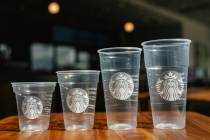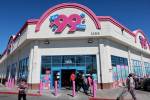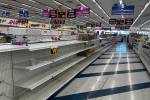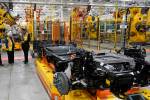U.S. retail sales tick up 0.2 percent in June
WASHINGTON — U.S. retail sales increased slightly in June, evidence that consumers remain cautious despite steady job gains this year.
Retail sales rose just 0.2 percent last month, the Commerce Department said Tuesday, held back by a sharp drop at building and garden supply stores. Sales also fell at restaurants and at auto dealers.
Bryan Wachter, director of public and government affairs for the Retail Association of Nevada, said consumer confidence is key.
“In Nevada, while we’re spending a little more than the nation in terms of an average for the year, we’re still cautious,” he said. “A 0.2 percent sales increase overall for retail is good but we’re hoping this is a summer lull before back to school shopping, Halloween and the holidays.”
Wachter added that he anticipated building and garden supplies sales would drop as people typically take care of outdoor projects in the spring.
“It makes sense that building and garden supplies would drop but the decline in restaurant sales is interesting,” he said. “I would expect that people would be out more and that restaurants would see a little more business this time of year.”
The figures suggest that Americans are still reluctant to spend freely, limiting growth in the April-June quarter. While employers have stepped up hiring since January, wage growth remains weak and is barely keeping up with inflation. Retail sales are closely watched because consumer spending accounts for 70 percent of the economy.
Still, economists were encouraged by some of the details in the report. A measure of retail sales that excludes volatile categories such as gasoline and autos rose at a solid 0.6 percent clip. Clothing stores, sporting goods stores and department stores all recorded decent sales gains. And a category that includes online and catalog retailers jumped 0.9 percent in June and has increased 8.1 percent in the past 12 months. That’s nearly double the 4.3 percent growth in overall retail sales in the past year.
According to Wachter, there has been a steady increase in online sales, which can also negatively impact the economy.
“There are a lot of concerns in terms of the local economy, sales and jobs as this category increases rapidly,” he said. “You’ll usually see a decrease in brick and mortar sales and other consequences for the local economy. There are a lot of repercussions for that number.”
Jim Baird, chief investment officer for Plante Moran Financial Advisors, said, “While the headline number for June was disappointing, there were some underlying pockets of strength. The solid advance … across numerous retail sectors suggests that consumers are spending, but doing so selectively.”
Sales at auto and auto parts dealers fell 0.3 percent, which contradicts strong data released by the automakers themselves earlier this month. The automakers had said sales reached an eight-year high in June. The two sets of data can sometimes conflict on a month-to-month basis.
Retail sales were revised higher in May to 0.5 percent from 0.3 percent, and in April to 0.6 percent from 0.5 percent.
Most analysts now expect the economy will expand at about a 3 percent annual pace in the April-June quarter, a forecast that was little changed by the retail sales report. That’s not as strong a rebound as many economists had hoped from a weak first quarter, when the economy shrank 2.9 percent, largely because of cold weather.
Economists had expected second-quarter growth of 3.5 percent rate a month ago, according to a survey by the National Association for Business Economics.
Several retailers have reported disappointing sales in the past month. Family Dollar, the Container Store and the Gap have all blamed falling sales on consumer caution. The CEO of the Container Store said the chain has been hurt by a “retail funk.”
Yet some other stores reported healthy sales gains, including the discount club chain Costco and grocery chain Kroger’s.
Purchases of large items like autos may be leaving many Americans with less money to spend on discretionary items like clothes and electronics. Rising grocery prices have likely also squeezed household budgets.
Still, employers are hiring at a healthy pace, which may give Americans more confidence to spend. Employers have added an average of 230,000 jobs a month in the first half of this year, up from 194,000 a month in 2013. That’s knocked the unemployment rate down to 6.1 percent, the lowest in nearly six years.
Las Vegas Review-Journal writer Ann Friedman contributed to this report.




























